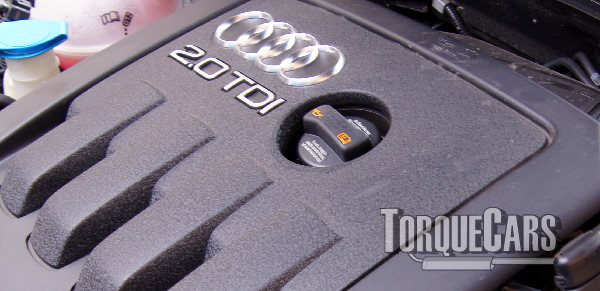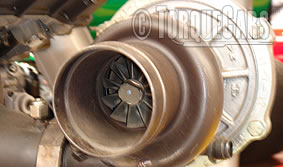The VAG group 2.0 Diesel engines are very popular and have had many revisions and updates over the years. We shall try to map out the differences between the engines and identify potential faults and issues with them.
All modern engines have weak spots, by pointing these out we hope to prepare the buyer to spot potential issues early on. We are not trying to make out that these engines are particularly unreliable or full of issues - I recently bought one after doing my research carefully. You should note that generally newer engines have had the faults engineered out completely.
Engine codes and specs for the 2.0 TDI (140 & 170 bhp version)
Pre 2008 engines are PD (Pumpe Düse) based and given a BKD, BKP (Mainly in the Passat) or BMM, BMN, BMR and BRD engine code.
BKD 140 bhp without DPF filter Siemens VDO injectors
BKP 140 bhp without DPF filter Siemens VDO injectors
BMM 140 bhp with a DPF filter Bosch injectors.
BMN 170 bhp - bigger turbo and Bosch injectors engines with DPF
BMR 170 bhp - bigger turbo and Bosch injectors engines with DPF
BRD 170 bhp - bigger turbo and Bosch injectors engines with DPF
After 2008 CR (common rail) engines came in and had CBAB and CBBB engine codes. The common rail engines are superior to the PD engines although there were a few minor teething problems on early engines.
CFHC, CBEA, CBAB, CFFB, CBDB, CJAA - 138bhp
CAGA 141 bhp
CRBC 148 bhp
CBBB 168bhp - bigger turbo and different injectors to the 140bhp engines
From 2010 engine codes included CBDB, CFHB, CHFC, CFGB
Faults and problems on these engines.

The early Siemens piezo injectors on the 170 had a fault, and would just fail causing the engine to cut out. Most of these have been recalled or replaced now so it shouldn't be an issue anymore.
There are plenty of reports of DPF issues requiring a dealer regen. If you drive it hot, go on long journeys and use high quality fuel you should have no problem at all. However if you do lots of short journeys then you are best advised to remove the DPF* or choose a non DPF model. (*removal of the DPF is not legal in some countries.)
There are also reports of a faulty fan controller where fan doesn't switch off, eventually draining the battery and potentially burning out the fan.
The 2.0 engines have a lumpy idle which is something you generally have to live with. However a faulty DMF, Injector failures or issues with the EGR flow rate can also cause a very lumpy idle or misfire.
BKP engines in particular have an issue with the oil pump drive gears which were subject to a recall and there are reports of turbo failures on these engines.
Cylinder head cracking.
There is a reference number to the right of the cylinder head underneath the fuel lines 03G 103 351 B or 03G 103 308 B. Look carefully at the letter at the end of this. If you have A you are virtually guaranteed to suffer a cracked cylinder head. The B is a little stronger but a few of these have still cracked. C is the one to go for and there are very few if any reports of cylinder heads cracking.
Keep a close eye on engines with the A or B codes, particularly if there are any faults or issues arising.
DMFs are fairly weak and will frequently fail. If yours should go we would suggest getting a high torque flywheel from Sachs as the price is similar and they are substantially stronger.
Tuning
There are few major differences between the 140 and 170 engines. In fact a 140 engine can be upgraded to 170bhp with a remap (in our opinion it is a better choice than buying a 170!) but 170-180 is the upper limit of the 140's turbo. The main differences are the turbo and injectors. If you stayed on the standard 140 injectors but fitted a larger capacity turbo you should still be ok to around 200-220bhp before you need to increase the injectors.
Taking a 140 beyond 170 bhp requires a larger turbo, TorqueCars suggest the GTB2056VK is definitely less laggy than the GTB2260VK due to its smaller compressors, but it can still flow to around the 260-275 bhp. Used turbos from the 170bhp engine are a good, cheap, viable upgrade option if you are looking at the 200bhp mark.
Remaps for the 2.0 TDI engines:
The 140 can be lifted to 170 on a software upgrade alone but to go beyond this you will need to look at the turbo. A remapped 140 is less laggy and more nimble than a 170 due to the smaller turbo. It's clear that the headline power figures are only half the story and you should take into account the general driveability of the engine.
A remap on the 170 bhp engines can comfortably attain 210-225 bhp. Again going higher than this will require a turbo upgrade or hybrid turbo. Remember that larger turbos are generally more laggy, so you'll have less low down torque. If you spec the right turbo upgrade you shouldn't have this issue.
Removing the EGR will not make a noticeable performance difference. At full (WOT) throttle it does not open and it helps reduce fuel consumption at low RPM speeds and lessens the work the engine has to do in overcoming the cylinder vacuum. It can make tickover a little lumpy and has been blamed for carbon build up in the engine but if you use a good quality fuel and cleaner (like BG244) you should not really have an issue.

250bhp is a sensible limit for most drivers looking for a daily driver.
The engines are quite strong though and you'll find that around the 350 bhp mark is the safe maximum power a standard block can handle, a lot depends on the driving style and maintenance though. Power delivery and traction over 220bhp can be an issue as well so it would be worth investing in a good LSD and sports tyres.
You will need to uprate the injectors around the 250bhp mark but this varies depending on which injectors you have fitted as standard to your car.
Most drivers report that the clutch begins to slip around the 420-430Nm mark and there is a torque limiter placed on the DSG gearbox.
Solid flywheels are not a great option on the 2.0TDi - it really does need a DMF to smooth out the lumps. People who have fitted lighter solid flywheels have often regretted their choice.
PLEASE HELP US COMPLETE THIS PAGE, If we've missed out some details or you have some tips to pass on please use the comments section below to let us know.
Please Check out my YouTube channel, we're regularly adding new content...
PLEASE HELP: I NEED YOUR DONATIONS TO COVER THE COSTS OF RUNNING THIS SITE AND KEEP IT RUNNING. I do not charge you to access this website and it saves most TorqueCars readers $100's each year - but we are NON PROFIT and not even covering our costs. To keep us running PLEASE Donate here
If you liked this page please share it with your friends, drop a link to it in your favourite forum or use the bookmarking options to save it to your social media profile.
Feedback - What do You Think?
Please use our forums if you wish to ask a tuning question, and please note we do not sell parts or services, we are just an online magazine.
Help us improve, leave a suggestion or tip
Please watch this video and subscribe to my YouTube channel.

 Click to accept YouTube Cookies & Play.
Click to accept YouTube Cookies & Play.